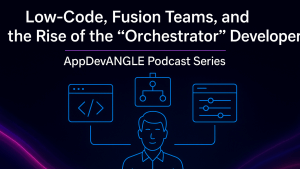This week’s AWS Summit in New York marked a watershed moment in enterprise software development, as AWS leadership outlined a compelling vision for an “agentic future” driven by autonomous AI systems, multimodal foundation models, and developer tooling that accelerates modernization at scale.
The event showcased how AI agents—once academic abstractions—are rapidly evolving into production-grade software entities capable of replacing static applications with dynamic, goal-driven automation. The momentum was unmistakable, underpinned by new capabilities in Amazon Bedrock, the Nova family of foundation models, and modular infrastructure, such as AgentCore.
Key Data Points from theCUBE Research:
- 68% of enterprises are piloting or deploying AI agents.
- 44% report agent task success rates >85%.
- 59% cite model flexibility and governance as top GenAI platform criteria.
- 63% prioritize accuracy/reliability over performance in foundation model selection.
- 70% plan to source third-party agents via marketplaces.
- 4x increase in demand for entry-level AI roles year-over-year.
- Vector embedding data is growing at 30x over two years.

From our vantage point at theCUBE Research, the implications are vast. In our 2025 Enterprise AI Trends Study, 68% of enterprise respondents report actively piloting or deploying AI agents for operational use cases. These use cases range from customer support and workflow automation to data classification and application refactoring—many of which were on display this week.
From Static Apps to Agentic Systems
At the heart of this transformation is a shift from hand-coded instructions to autonomous AI agents that are capable of planning, reasoning, and adapting in real-time. Rohit Prasad, SVP and Head Scientist of Amazon AGI, framed it best: “Agents are a tectonic shift in how software is built, deployed, and operated.” Amazon Bedrock and Nova are now the backbone of this evolution, enabling enterprises to scale agents that are secure, customized, and context-aware.
These agents are not merely copilots—they are task completers, knowledge navigators, and workflow orchestrators. For example, AlviHelp demonstrated how Nova Act, AWS’s agent framework, is being used to help applicants navigate state-level food assistance portals. The agent interprets web layouts, adapts dynamically, and answers hundreds of questions autonomously—an actual real-world proof point.
Our research shows this is more than experimentation: 44% of enterprises deploying agents report task success rates exceeding 85%, a key threshold for business-critical reliability.
Amazon Bedrock Expands Foundation Model Choice
Amazon Bedrock has quietly become the platform of choice for enterprises seeking flexibility and control in deploying generative AI. As of July 2025, the Bedrock catalog has expanded from 7 to 12 model providers, including newcomers such as Luma and 12Labs, as well as open-source models like R1 from DC Labs, which AWS integrated in under 10 days. This agility in onboarding cutting-edge models reflects a strategy focused on meeting the diverse needs of enterprise AI teams in terms of modality and customization.
Importantly, Bedrock is not just about access—it’s about secure, responsible deployment. AWS integrates native guardrails, optimization for cost and latency, and fine-tuning options through SageMaker AI. According to theCUBE Research, 59% of AI development teams say model flexibility and built-in governance are top factors in selecting a GenAI platform—needs Bedrock appears well-positioned to meet.
Nova Models: From Conversation to Custom Simulation
Amazon Nova continues to expand its utility across text, image, and video generation. New additions, such as Nova Sonic and Nova Premiere, offer advanced conversational reasoning and multimodal capabilities, while Nova Canvas and Virtual Triad bring immersive retail experiences to life.
Nova is also proving enterprise-grade. With over 10,000 customers, including Blue Origin, Dentsu, and Infosys, the platform’s use cases span finance, media, and industrial design. One standout example came from MIT, where researchers used fine-tuned Nova models to reduce simulation error in synthetic material design by 95%. These are not toy applications—they are accelerating core scientific workflows.
In theCUBE Research’s AI Infrastructure Benchmark, 63% of enterprises cited “accuracy and reliability” as more important than “raw performance” in selecting foundation models for production. Nova’s design—especially with options for parameter-efficient fine-tuning—addresses this trade-off directly.
AgentCore acts as the Operating System for Agents
If Nova and Bedrock are the engine, AgentCore is the operating system enabling enterprises to deploy agents at scale. Announced in more detail at the Summit, AgentCore offers runtime execution, persistent memory, secure gateways, identity integration, and observability dashboards. It’s the scaffolding that turns agents into scalable, secure software services.
This matters because agent failures in production are unacceptable. As we’ve seen in our recent AI Reliability Report, inconsistency is the top barrier to adoption. One day, your agent achieves 90% task completion; the next, it drops to 70% due to environmental changes. AgentCore’s memory and observability features are critical to solving this.
AWS Marketplace Expands with Agent Ecosystem
AWS also revealed that its Marketplace now includes AI agents, tools, and services from third-party providers, integrated with AgentCore. Vendors such as Anthropic, Salesforce, and Deloitte are offering pre-built agents, frameworks, and domain-specific knowledge bases. This mirrors the success of API marketplaces in the cloud era, but tailored for AI agents.
In our upcoming 2025 AI Vendor Trends Report, over 70% of enterprises say they plan to source third-party agents rather than build from scratch. This Marketplace shift reflects that reality and creates a vibrant plug-and-play ecosystem for agent capabilities.
Vector Data Comes to S3
One of the most significant announcements—though less flashy—was the introduction of S3 Vectors. This new capability enables the scalable and low-cost storage and retrieval of vector embeddings directly from Amazon S3. Vector databases are foundational for agents to build context and understand similarity. Yet, most existing solutions are hot-path optimized and expensive.
S3 Vectors changes that enable cost-effective, versioned vector storage for long-term learning and historical retrieval. Our research estimates that vector embedding growth will be 30 times over the next 24 months. Without scalable storage, enterprises face bottlenecks in maintaining useful AI memory. S3 Vectors could become a key enabler of persistent, compliant, and queryable memory for agent systems.
Education and Workforce Development
In a nod to AI literacy, AWS announced the AWS AI League—a gamified educational initiative aimed at 2.7 billion young adults worldwide. Through DeepRacer competitions and hands-on sessions, AWS aims to democratize AI skills for the next generation of builders. theCUBE Research supports this approach: our survey data shows a 4x increase in demand for entry-level AI talent in just the last 12 months. Gamification and real-world experience are key to closing the skills gap.
The impact of these announcements is significant to the AppDev community. According to our research, we see it as a positive move in developer productivity, overall.

Intuit and GenOS Use Case
No company exemplified this agentic vision more than Intuit. Its AI and data platform—GenOS—runs on AWS and now powers 60 billion ML predictions daily, across 95 petabytes of data. With over 1,000 AI patents and real-time agent deployment to customers, Intuit serves as a blueprint for what production-scale agent platforms can achieve.
GenOS leverages Bedrock, S3 Vectors, and custom orchestration tools to build, monitor, and manage agents in finance, payments, and accounting. It includes GenRuntime (the agent brain), GenUI (the user interface), and GenStudio (the engineering interface). This architecture ensures safety, adaptability, and extensibility—core pillars for enterprise AI.
Key Takeaways – The Agentic Future Is Now
The 2025 AWS Summit NY didn’t just highlight AWS’s tech stack—it cemented a vision of software where AI agents are first-class citizens. Whether it’s Nova enabling precise multimodal outputs, Bedrock offering flexible model access, or AgentCore providing reliable deployment infrastructure, AWS is laying the groundwork for the next evolution in software development.
Based on our ongoing research for AI agent adoption across the enterprise landscape at theCUBE Research, we expect the next 12–24 months to be defined by rapid progression from experimentation to agent-centric architectures as foundational components of enterprise IT and software development.
1. AI Agents Will Become Standard Across Enterprise Workflows
By mid-2026, we forecast that:
- More than 75% of enterprise organizations will embed at least one AI agent into a core business process.
- Use cases will expand beyond research assistants and copilots to include autonomous customer service agents, finance bots, procurement assistants, and AI-driven internal developer platforms (IDPs).
As organizations increasingly adopt frameworks like AgentCore and orchestration systems like GenOS, agents will transition from being novel to being necessary.
2. A “Model Mesh” Strategy Will Replace Model Monocultures
Enterprises are rapidly moving away from one-size-fits-all approaches. As seen in Amazon Bedrock’s expansion from 7 to 12 providers, the future lies in a mesh strategy model. In this flexible architecture, multiple foundation models are selected and orchestrated based on modality, accuracy, latency, and cost requirements.
Our 2025 research shows:
- 62% of AI decision-makers prefer using multiple models across use cases rather than relying on a single provider.
- Over 50% of organizations plan to adopt open-weight models in tandem with proprietary offerings for cost optimization and fine-tuning flexibility.
3. Vector Infrastructure Will Reshape AI Memory and Personalization
With S3 Vectors now available, AWS is ushering in a new phase of AI memory infrastructure. Persistent, versioned, and low-cost vector storage is crucial for enabling long-term memory and context retention—key traits of reliable, agentic systems.
We estimate that:
- Vector embedding usage is expected to grow 30 times by 2026 across AI-driven applications.
- 80% of LLM-based systems will rely on vector databases to deliver personalized, context-aware experiences.
This infrastructure is not optional—it’s fundamental for building agents that learn, remember, and evolve.
4. Customizable Agents Will Drive Vertical-Specific Innovation
Nova’s fine-tuning capabilities and SageMaker’s integration unlock a wave of vertical AI agents, customized for healthcare, retail, finance, legal, and industrial domains. These agents will increasingly replace horizontal copilots with specialized intelligence.
We expect that:
- By late 2026, 40% of enterprises will have deployed domain-specific agents fine-tuned on their internal data and workflows.
- Industries such as insurance, retail, and telecom will lead the charge, driven by the need for automation, compliance, and differentiated customer experiences.
5. Modernization and Migration Will Accelerate with AI Assistance
Tools like AWS Transform are already demonstrating how AI-driven modernization can compress years of legacy technical debt reduction into months or even weeks. Our data shows that:
- Forty-seven percent of enterprises are prioritizing the modernization of legacy applications as a prerequisite for successful AI adoption.
- Organizations that incorporate AI-based transformation tools report up to 4x faster modernization cycles and 30–50% cost reductions compared to traditional refactoring methods.
AI-assisted modernization is not just about speed—it’s about freeing up engineering capacity for innovation.
Strategic Guidance for Enterprises
As organizations prepare for this agentic shift, theCUBE Research recommends:
- Adopt a modular architecture: Utilize platforms like Bedrock and AgentCore to construct systems that can integrate new models, tools, and memory layers without requiring re-architecting from scratch.
- Invest in observability and reliability: Agents that fail silently erode trust. Ensure your infrastructure supports debugging, fine-tuning, and resilience at every layer.
- Balance build vs. buy: Use marketplaces and third-party solutions where appropriate, but prioritize customization for core business logic and workflows.
- Double down on education: Reskilling and onboarding talent for agent development and prompt engineering will be essential. Programs like AWS AI League offer a head start.
We are entering an age where software isn’t just written—it’s generated, orchestrated, and continuously optimized by intelligent agents. AWS’s announcements and architecture at Summit NY 2025 showcase not only the tools but the operational philosophy to power this future.
Enterprises that act now—by deploying reliable agents, modernizing their infrastructure, and building with domain-specific intelligence—will gain a significant advantage in the agent-powered economy.
As Ashok Srivastava, Intuit’s Senior Vice President and Chief Data Officer, aptly said: “If anything is possible, what are you going to build?”
For enterprises, the question is no longer whether agents will become central to operations—it’s how fast you can build, deploy, and scale them.



